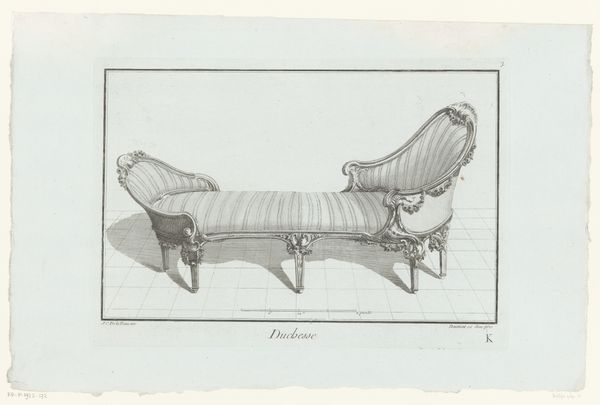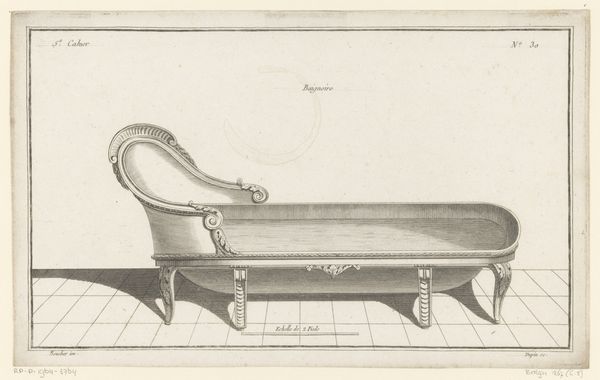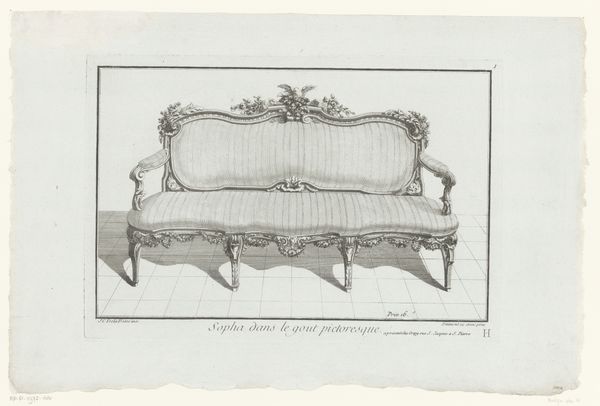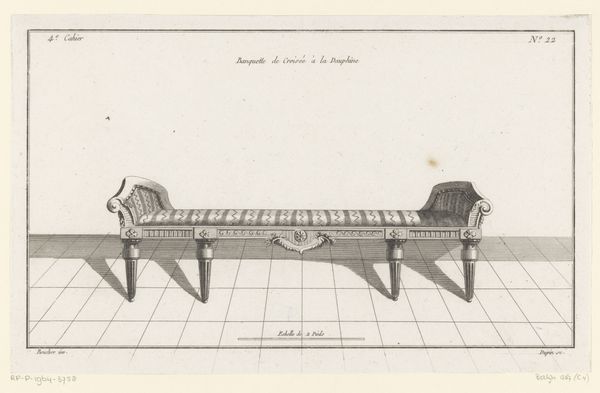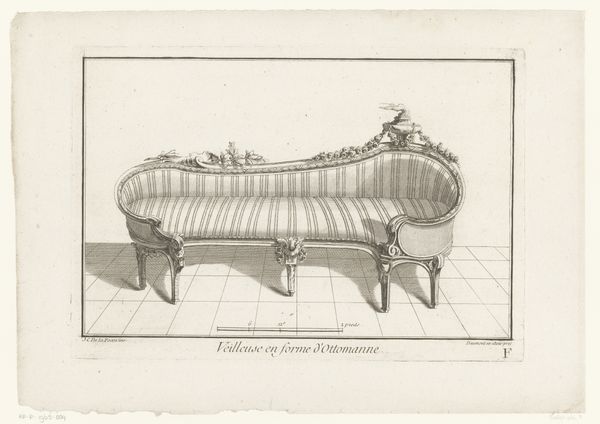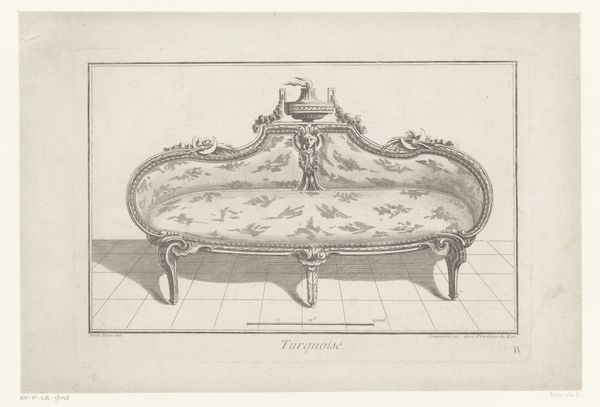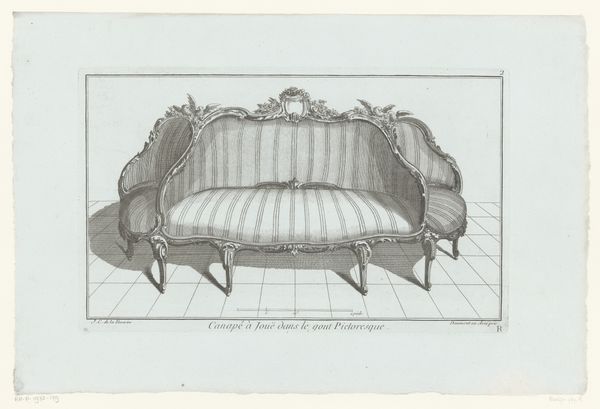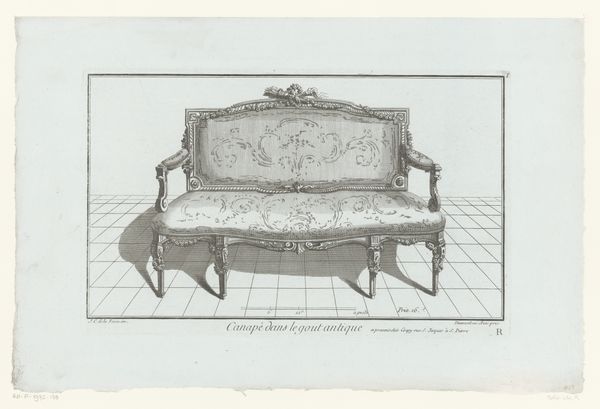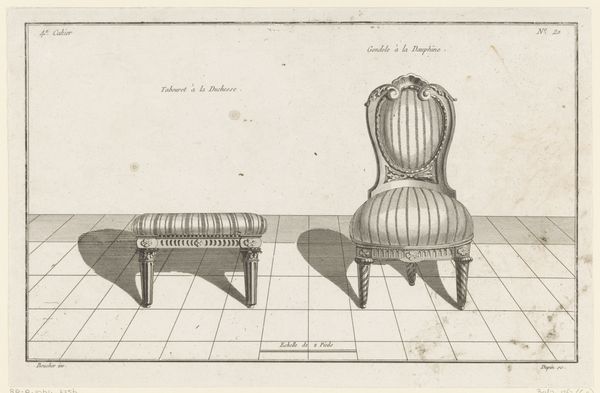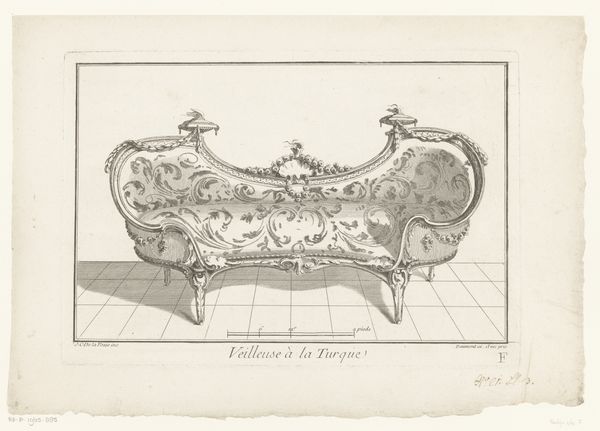
drawing, paper, engraving
#
drawing
#
neoclacissism
#
paper
#
form
#
line
#
decorative-art
#
engraving
Dimensions: height 200 mm, width 329 mm
Copyright: Rijks Museum: Open Domain
Curator: Oh, my goodness, what a delightfully rigid contraption! It’s so…clean. Intensely planned, not a stray thought anywhere. Editor: Indeed. What you're reacting to is Nicolas Dupin's "Bathtub with backrest," made between 1772 and 1779. The piece, an engraving on paper, comes from the Rijksmuseum’s collection. It offers an example of neoclassicism infiltrating even the most intimate aspects of life. Curator: A bathtub designed to be more Roman than relaxing. Is that the essence of neoclassicism? Even bathtubs aren’t allowed to be frivolous. Editor: In a way, yes. This aesthetic arose in parallel with Enlightenment ideals; reason, order, and a focus on civic virtue meant a conscious rejection of the preceding Rococo era, which was seen as overly ornamental and decadent. This is all line and idealized form. Curator: The dedication to those lines…It reminds me of technical architectural drawings. But imagine trying to unwind in that! The lines seem so severe. Were people actually bathing in this, or was it meant more as a status symbol, do you think? Editor: Good question. The aristocracy definitely favored bathing, but it was all a very performative activity with servants and toilette. Also, such baths would be costly to install and maintain. Dupin probably drew it as inspiration and part of a book series. It presents "antique" furniture, which fits the revivalist, educational aspirations of that era. It's meant to instruct artisans, likely to emulate Roman virtues but not necessarily everyday bathing! Curator: Well, thank goodness for that! The whole affair looks chilly and impractical. All this focus on Grecian urns and right angles just to get clean? Seems exhausting. Though I confess, there’s a stark kind of beauty in its austere presentation, like a monument to hygiene. Editor: Precisely. What the engraving communicates so well is that through its careful construction, it expresses how high moral ideals manifested themselves in even the private spaces of life. But indeed, one can’t imagine indulging in an ordinary, simple pleasure in this bath. Curator: Ultimately, though, this does provoke a question for today about what’s actually worth preserving from our cultural past—form or comfort? Editor: And does every object deserve a museum? Another excellent question, which deserves more than our remaining seconds to discuss.
Comments
No comments
Be the first to comment and join the conversation on the ultimate creative platform.
